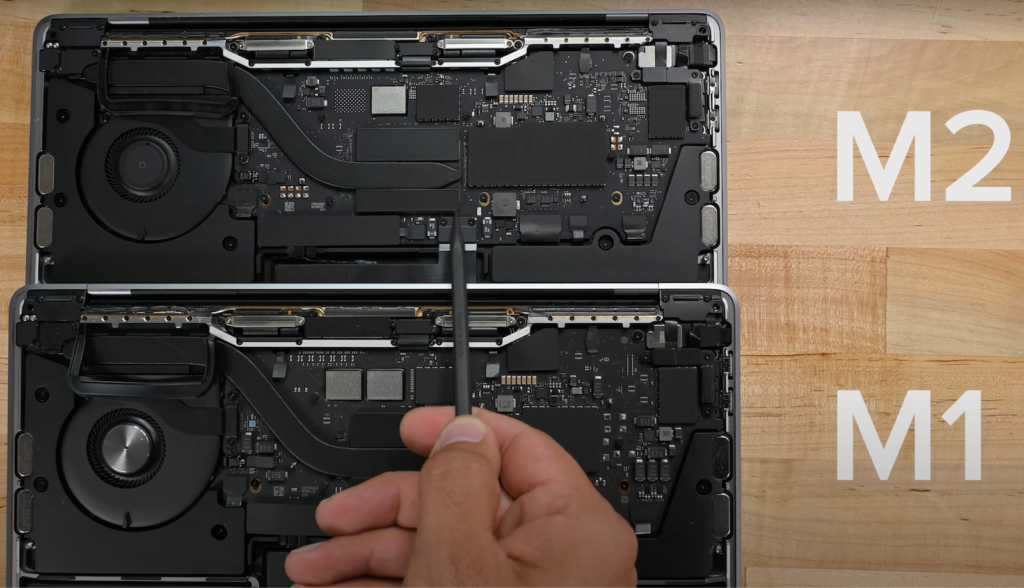Apple launched the first M2 Mac, the 13-inch MacBook Pro, last week. Now the repair professionals at iFixit have taken a closer look at the new device.
In terms of design, iFixit doesn't have much to say about the M2 MacBook Pro, because aside from the M2 chip, it's identical to the previous generation MacBook Pro. It has the same chassis, Touch Bar, and screen, with the updates focused on the interior. As expected, iFixit notedthat almost all components are identical and could not find any external changes. Inside, some chips and smaller components have been updated. But the rest of the internals are identical. iFixit was able to remove the M1 and M2 boards and install the M2 board into the chassis of the M1 MacBook Pro. Although the boards can be replaced, the M2 chip does not work in the M1 chassis due to the component swap. This means that the trackpad, keyboard, and Touch ID sensor will no longer work once the M1 and M2 chips are replaced.

13″ MacBook Pro with M2 chip uses a single SSD chip
Because the M2 MacBook Pro components physically fit into the M1 MacBook Pro, iFixit claims that Apple is making a "blatant attempt to block repairs and replacements through software lock-ins."
Previous arguments for the lack of upgradability between generations have been size considerations within the chassis, cost considerations, or manufacturing limitations. So how do we explain this?
iFixit has confirmed the SSD design that resulted in slower SSD benchmark performance on the 256GB M2 MacBook Pro compared to the 256GB M1 MacBook Pro. Apple actually uses a single 256GB SSD chip in the M2 MacBook Pro while the M1 uses two 128GB SSD chips. Two SSD chips allow the system to read and write up to twice as fast because the operations can be performed simultaneously. It remains unclear why Apple made this change. iFixit suspects it is a direct result of component shortages. Overall, iFixit explains that Apple missed the opportunity to introduce its first upgradable device in a long time and that by limiting interoperability, the company also missed the chance to make a statement about repairability and eco-friendly design. (Image: Apple)





